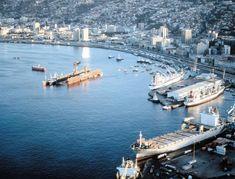
Although Chilean fruit volumes increased year on year in the 2005-06 season just ended, this past campaign has taught growers and exporters that quality must improve.
Post-harvest condition in Red Globe grapes and stone fruit particularly were disappointing but volumes climbed overall to reach 228.9 million cases by August 6 - a 2.5 per cent increase on 2004-05, according to figures just released by the Chilean Fresh Fruit Exporters Association.
Grape sendings were up 7.7 per cent in volume terms while plum volumes fell 17 per cent, peaches by 16 per cent and nectarines by 31 per cent - a reflection, observers say, of poor quality.
The biggest gains were in blueberries, which saw volumes rise by almost 31 per cent with sendings to Europe including the UK almost hitting 1.5m cartons, and cherries, which registered a whopping 63 per cent hike to 4.4m cartons with Europe and the UK taking more than 796,000 cartons. Blackberries also made large gains in percentage terms with a 38 per cent increase from a much lower base.
Although Dole Chile - the country’s largest exporter - registered a decline of some 2m cartons, performances for other senders were improved. David del Curto saw a reversal of fortune as its exports rose by 1.2m cartons on the previous season. Overall the value of Chilean fresh fruit exports topped $2 billion.
“In general, we felt producers were inclined to contract their fruit to the firm,” said DDC managing director Jorge Valenzuela. “Next season, we will have greater volume due to the entry in production of plantations in our own fields and a good crop of stonefruit. We anticipate that it could be close to 13m cartons.”
CFFA believes that as well as cherries and blueberries, clementines also show potential for greater growth and this season recorded an 18 per cent improvement in total volumes exported to all markets compared with a year ago.
“In general, price performance for the past season was good for the majority of fruits with the exception of table grapes,” said CFFA president Ronald Bown. “…For next season, an important point will be that cold units are similar to 2005 levels, but still below those of 2004. This is another indication of the particular meteorological conditions that have been affecting us in recent seasons. In terms of volume, we hope to increase by at least five per cent.”



